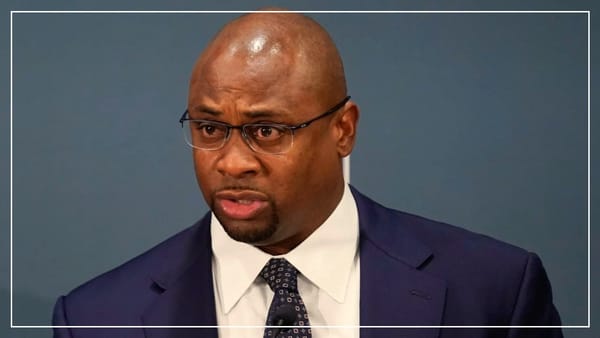Robert F. Smith
Robert F. Smith built Vista Equity into a $100B firm and a $10.8B net worth. From software deals to philanthropy, his story is a blueprint for Black wealth and legacy.

Robert F. Smith - Private Equity’s Quiet Architect of Black Wealth
Robert F. Smith stands as one of the most powerful yet understated figures in American finance. Founding Vista Equity Partners in 2000, he quietly built a world-class investment firm focused on enterprise software - amassing tens of billions in assets. His story is one of strategic discipline, generational vision, and philanthropy rooted in structural change. He is walking, living proof that Black wealth is built in code, not clout.
Engineering Roots & Early Drive
Born in Denver, Colorado, Smith was raised by two educator parents who taught him that responsibility to community is non-negotiable. His mother even carried him - at six months old - to the 1963 March on Washington, where MLK delivered “I Have a Dream.”
Smith earned a chemical engineering degree from Cornell in 1985, then an MBA from Columbia in 1994. Early on, he developed patents working as an engineer, then went on to advise on tech mergers at Goldman Sachs.
Building Vista: Tech + Discipline
In 2000, Smith founded Vista Equity Partners - a firm that invests exclusively in enterprise software companies. Vista’s mantra: operational excellence built on “Vista Best Practices,” not hype.
Over time, Vista scaled to manage more than $100 billion in assets, one of the fastest-growing and most consistent-performing private equity firms.
Smith’s leadership earned him recognition as a “Game Changer” in private equity and a place on Vanity Fair’s New Establishment List.
Quiet Billionaire Status & Net Worth
As of late 2024, Forbes estimated Smith’s net worth at approximately $10.8 billion, ranking him the second-richest Black person in America and among the wealthiest globally.
His wealth is anchored not in visibility, but in high-stakes software investments and disciplined scale - illustrating Tall Cotton’s principle: visibility isn’t the same as legacy.
Strategic Philanthropy: Reinventing the Folded Table
Smith’s philanthropy isn’t about attention - it’s about justice through infrastructure.
- In 2019, he infamously wiped out the student debt of the entire Morehouse College graduating class - roughly $34 million - during his commencement speech.
- He launched the Student Freedom Initiative, with an initial $50 million commitment to provide low-cost financing to HBCU STEM students.
- Through the Fund II Foundation, he created internXL - a pipeline matching thousands of diverse STEM students with internships.
- He’s also donated generously to institutions like Cornell, the National Museum of African American History & Culture, and Carnegie Hall, where he was the first Black board chair.
These are not one-off acts - they’re building blocks of generational access.
Cultural Legacy Meets Financial Infrastructure
Smith’s leadership defies any single category. He is a financier, cultural steward, infrastructure builder, and legacy cultivator.
He leads conversations across tech, education, equity, and economic dignity. On boards (like Columbia Business School and Carnegie Hall), he’s not just a donor - he’s a strategic presence.
Robert F. Smith & The Tall Cotton
At The Tall Cotton, we document stories that aren’t headline-clingers but legacy-builders. Robert F. Smith exemplifies that ethos. He didn’t seek applause - he built infrastructure. He sees software as scalable architecture for economic freedom. He manifests leadership at intersections where wealth meets justice.
To stand in “tall cotton” means having what’s needed - deep roots, generational foresight, a harvest that keeps giving. Smith didn’t just take his seat at the table - he built a table others can lean into.
So read his story. Learn his plays. Then ask:
“What’s my version of The Tall Cotton?”
Because legacy isn’t applause - it’s planted.




